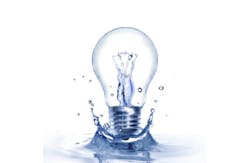Portland water pipeline produces renewable energy under PPA
PORTLAND, Ore. — Lucid Energy and the Portland Water Bureau (PWB) have officially turned one of Portland’s major water pipelines into a generator of renewable energy, according to a press release.
Under a 20-year power purchase agreement (PPA) with Portland General Electric (PGE), Lucid Energy’s LucidPipe™ Power System utilizes the gravity-fed water flow inside a PWB pipeline to spin four 42-inch turbines, which are now producing electricity for PGE customers, helping promote resource diversity and renewable power development for the state of Oregon, stated the release.
Installed at no cost to the city of Portland or PWB, reported the release, the system is the first project in the U.S. to secure a 20-year PPA for renewable energy produced by in-pipe hydropower in a municipal water pipeline.
The system, NSF/ANSI Standard 61 certified for use in potable water systems, will begin full energy production within the next few months, continued the release.
Fully financed in October 2014 with capital from Harbourton Alternative Energy, a subsidiary of Harbourton Enterprises, the system will generate around $2 million worth of renewal energy capacity over the 20-year PPA period, and PWB and Harbourton will share the revenue, noted the release.
“The Water Bureau welcomed the opportunity to explore the innovative use of a Portland pipe delivering water to create hydroelectric power as well,” said PWB Administrator David Shaff. “Water and energy are closely linked. The Lucid pipe system provides a way for the Water Bureau to contribute to generating electricity for our community in a clean, low-cost and renewable way.”
Read the entire release here.
